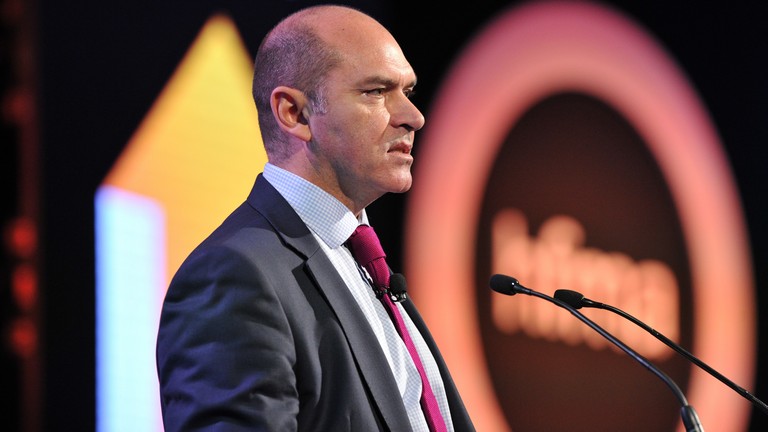News / A&E targets will be sole trigger for STF performance payments in 2017/18
The performance element of the sustainability
and transformation fund (STF) in 2017/18 will be based on meeting A&E waiting times, better management of A&E demand and a reduction in delayed discharge.

In a joint letter to trusts, commissioners and local authorities, NHS Improvement and NHS England chief executives Jim Mackey (right) and Simon Stevens said payment of the performance element of the 2017/18 STF – worth 30% of the total – will depend on A&E performance alone. Previously, the performance element also included meeting 62-day cancer and 18-week elective care targets.
As well as managing demand and freeing up acute beds by cutting delayed discharges, they said trusts must step up their A&E performance. They must ensure 90% of patients are seen within four hours before or in September 2017 and this must be sustained and improved upon to hit the 95% target by March next year.
The latest A&E performance figures – covering January 2017 – show 85% of patients were admitted, transferred or discharged within four hours, the worst performance since monthly reporting began in 2010.
In the March Budget, social care was allocated an extra £2bn over three years, including £1bn in 2017/18. The letter said the NHS and local authorities must ensure the additional funding in 2017/18 is used in part to free up 2,000 to 3,000 acute hospital beds.
While NHS leaders must engage with their counterparts in social care to plan how to reduce delayed discharge, some hospitals had not yet adopted best practice in patient flow. Measures such as more timely hand-off between A&E clinicians and acute physicians, discharge to assess schemes and seven-day discharge should be adopted everywhere before October, Mr Mackey and Mr Stevens insisted.
Trusts hoping to receive the performance element of the STF must work with local partners to improve A&E performance by introducing triage/streaming at every emergency department by October; improving care home access to clinical advice; and rolling out evening and weekend GP appointments to 50% of the population by March 2018 and 100% a year later.
The letter said: ‘Throughout this winter, there have been three consistent themes relating to urgent and emergency care: difficulties in discharging inpatients when they are ready to go home; rising demand at A&E departments, with the fragmented nature of out-of-hospital services unable to offer patients adequate alternatives; and complex oversight arrangements between trusts, CCGs and councils.
‘To avoid a repeat next winter of this past winter, we need to make concrete changes on all three fronts.’
FDs’ quality warning
Nearly two-thirds of trust finance directors and more than half of clinical commissioning group chief financial officers believe the quality of care locally has deteriorated in the past year. According to the King’s Fund’s latest Quarterly monitoring report, finance directors said the deterioration was not due to lack of planning – 70% had added to staff to cope with winter pressures, while 80% of CCGs paid for additional primary care resources.
The lead finance officers said the worsening A&E performance was the result of sicker patients with more complex illnesses – 80% of finance directors identified these patients as the main source of pressure on A&E, while 70% believed delayed discharge was a key factor. Only 27% pointed to poor access to GPs and 20% to clinical staff shortages.
Trusts and CCGs remained pessimistic about their financial position in 2017/18, with 53% of trusts and 63% of CCGs fairly or very pessimistic about achieving financial balance by year-end. Almost 30% of trusts said the financial pressures meant they were planning to reduce their permanent clinical staff numbers.
Related content
We are excited to bring you a fun packed Eastern Branch Conference in 2025 over three days.
This event is for those that will benefit from an overview of costing in the NHS or those new to costing and will cover why we cost and the processes.